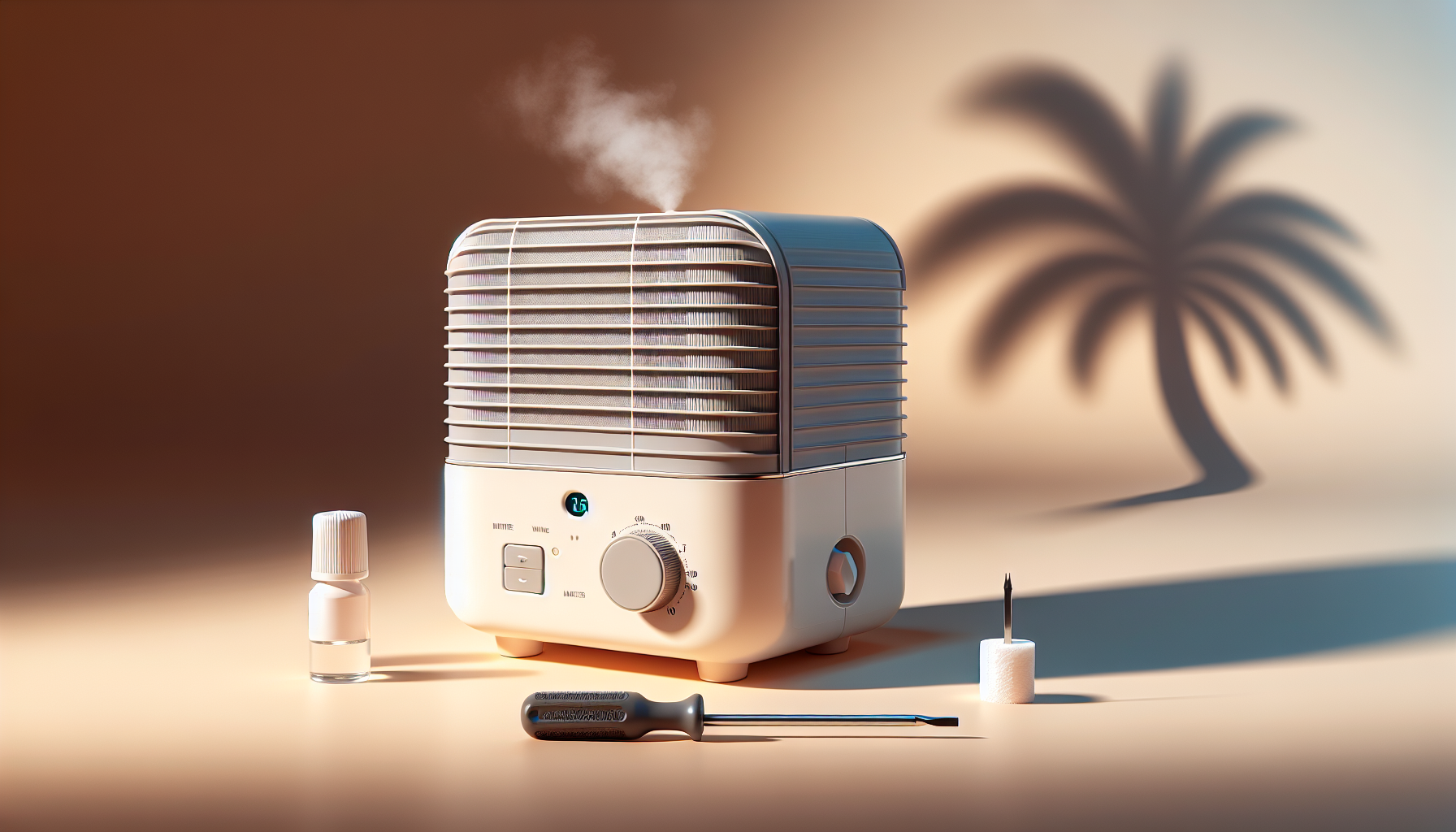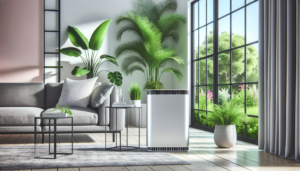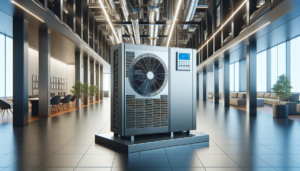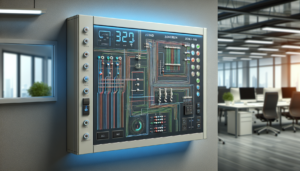Is your humidifier making strange noises or leaving puddles on the floor?
Table of Contents
ToggleHumidifier Repair Near Myrtle Grove, FL
You live near Myrtle Grove. You want your home to feel comfortable. You want clean air and good humidity. This article helps you find and fix common humidifier problems. You read short sentences. You see clear steps. You feel calm about the next action.
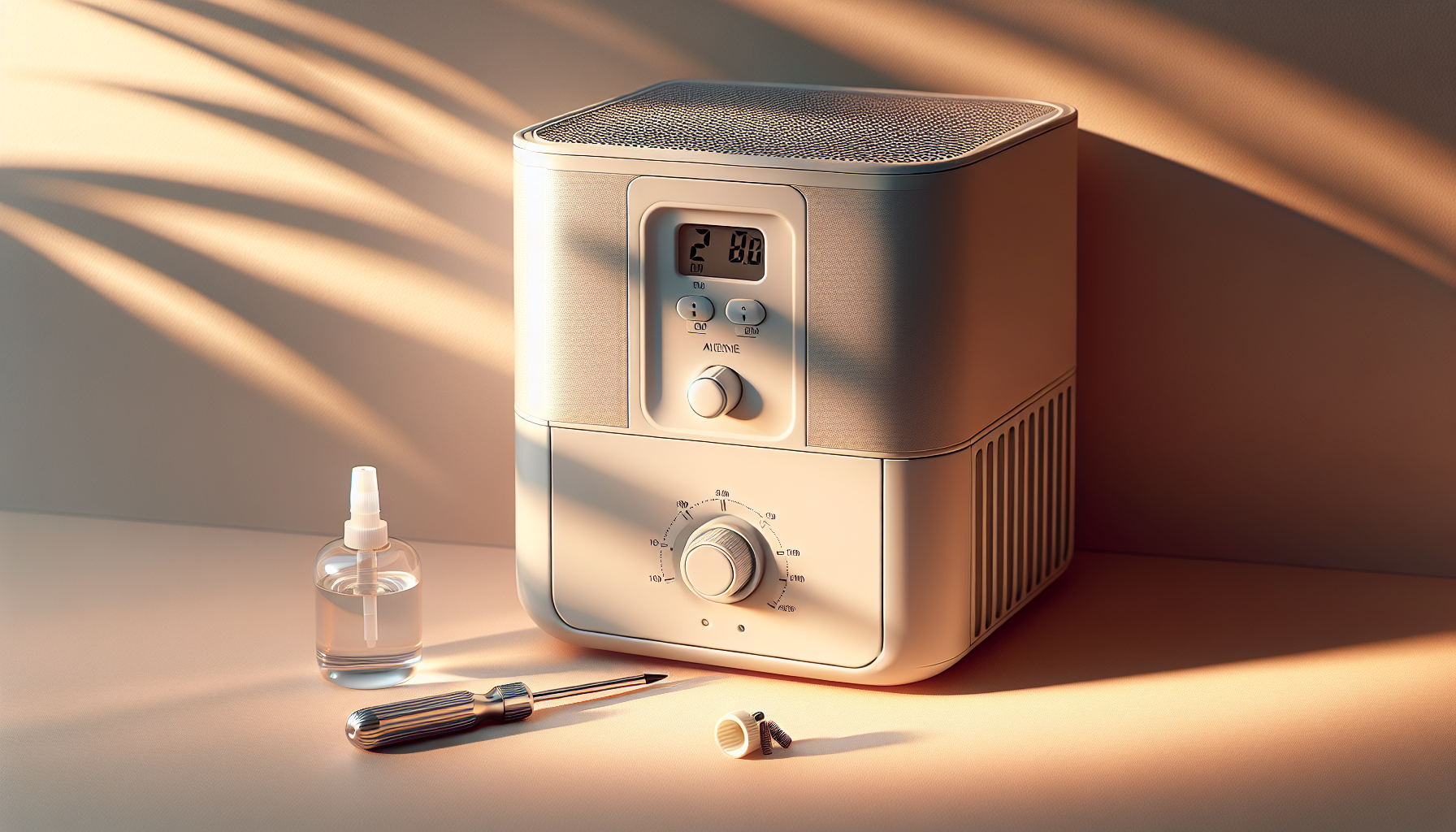
What a humidifier does
A humidifier adds water vapor to the air. It raises the moisture level in your home. This helps your skin, throat, and plants. It helps wooden furniture and musical instruments. You control the humidifier with a knob, a dial, or a control panel.
How you should know your humidifier works
You turn on the humidifier. The fan runs. You smell no bad odor. You notice no leaks. The room feels less dry over a few hours. Your plants look happier. Your nose stops feeling scratchy at night.
Common humidifier problems
You may see many kinds of problems. You hear strange sounds. You see water on the floor. You smell bad odors. You see no mist at all. You notice very high humidity. You notice white dust on furniture. Each problem tells you about a likely cause.
Use this table to match what you see with a likely cause and an action you can take.
| Symptom | Likely cause | Simple action |
|---|---|---|
| No mist | Clogged nozzle, empty tank, failed motor | Fill the tank, clean nozzle, check power |
| Strange noise | Loose part, worn fan, mineral buildup | Turn off, inspect, tighten screws |
| Leaks on floor | Cracked tank, loose hose, wrong installation | Turn off, find source, tighten or replace part |
| Bad smell | Mold, dirty filter, standing water | Clean tank, replace filter, disinfect |
| White dust | Hard water minerals | Use distilled water or install filter |
| High humidity | Faulty humidistat, wrong setting | Check setting, test humidistat, call tech |
| Low humidity | Low output unit, clogged pad | Replace pad, clean unit, check fan |
Simple safety rules
You unplug the unit before cleaning. You dry your hands. You move the unit to a clear surface. You avoid water near electrical outlets. You follow the manufacturer guide. You wear gloves if you use bleach or vinegar.
How to check your humidifier safely
You look at the power cord for damage. You check the water level. You open the tank cap and smell inside. You look for cracks or mineral buildup. You turn the unit on and listen. You keep the humidifier away from curtains and papers.
When you can fix the humidifier by yourself
You can try a few fixes at home. You can clean the tank. You can replace the filter or pad. You can reset the unit if it has a reset switch. You can tighten loose screws. You can try distilled water to cut white dust.
You stop if you see broken wires. You stop if the motor smells burnt. You stop if the unit still leaks after simple fixes.
When you should call a professional
You call a professional when the problem is inside the fan or motor. You call when the unit connects to a central HVAC system. You call when water leaks inside walls or floors. You call when the unit trips breakers. You call when you feel unsure or unsafe.
How a professional repair visit works
You call a company. You set a time. A technician arrives on time. The technician wears a uniform. The technician looks at the unit. The technician tests the humidifier. The technician tells you the problem in plain words. The technician gives a price. You agree. The technician fixes the unit. The technician cleans up. You test the humidifier. You pay and keep the receipt.
What a technician checks first
The technician checks the power supply. The technician checks the water line. The technician checks the humidistat or control. The technician checks the fan and motor. The technician checks the pad, filter, or nozzle. The technician looks for mineral buildup and mold.
Parts that often need replacement
You may need a new pad or filter. You may need a new water panel. You may need a new control board. You may need a new motor. You may need a new water valve. You may need new tubing or seals.
Use this table to see parts and why they fail.
| Part | What it does | Why it fails |
|---|---|---|
| Pad / Filter | Absorbs water and lets air pass | Clogs with minerals or mold |
| Water valve | Opens to let water flow | Wears out or gets stuck |
| Motor / Fan | Moves air to make mist | Wears out or burns out |
| Control board | Runs sensors and settings | Fails from moisture or age |
| Water panel | Evaporates water into air | Becomes clogged or hard |
| Tubing / Seals | Carries and holds water | Cracks or becomes loose |
Typical repair times
You get simple fixes in 30 to 60 minutes. You get part replacements in 1 to 2 hours. You get control or motor repairs in 2 to 4 hours. You may wait longer if a part needs to come from a supplier. The technician tells you the time estimate before starting.
Typical cost ranges
You see simple repairs for low cost. You see part replacements for moderate cost. You see motor or board repairs for higher cost. Prices change with brands and parts.
| Repair type | Typical cost range |
|---|---|
| Cleaning and minor fix | $50 – $150 |
| Filter or pad replacement | $30 – $150 |
| Water valve or tubing | $75 – $300 |
| Motor or fan replacement | $200 – $600 |
| Control board replacement | $200 – $700 |
| Full unit replacement | $200 – $2,000 |
These numbers give you a rough idea. The technician gives an exact quote after inspection. KadeCo Inc. offers free quotes on all jobs. You can call for a clear price before work starts.
DIY fixes you can try right now
You can try a short list of safe steps. You do them in order. You stop if you do not feel safe.
- Turn off and unplug the unit.
- Empty the tank and rinse with warm water.
- Soak the tank in a mild vinegar solution for 15 minutes to remove scale.
- Rinse well and dry with a clean cloth.
- Replace or rinse the filter if it is washable.
- Refill with distilled water if you have hard water.
- Plug in and test the unit.
You avoid bleach unless you follow the manufacturer guide. You wear gloves when you use strong cleaners.
Cleaning step-by-step
You remove the tank and pan. You pour out old water. You mix equal parts water and white vinegar. You pour the mix into the tank. You let it sit for 15 minutes. You scrub with a soft brush. You rinse three times. You dry with a clean cloth. You put the parts back.
How often you should clean the humidifier
You clean the tank weekly during heavy use. You replace filters every 1 to 3 months for many units. You replace pads or water panels each season or as recommended. You inspect the unit monthly for leaks or smells.
Signs your humidifier water is bad
You see green or black spots in the tank. You smell mold or slime. You see cloudy or slimy water. You notice that the humidifier makes more noise than usual. You replace the water and clean the tank.
Hard water and white dust
Hard water leaves white dust on furniture. White dust comes from minerals in water. You stop this by using distilled water. You install a water softener or a whole-home filter. You clean surfaces with a damp cloth to remove dust.
Why the humidistat matters
A humidistat controls the humidity level. You set the humidistat to a level you like. The humidistat turns the humidifier on and off. A bad humidistat gives wrong readings. You replace a bad humidistat to fix over-humid rooms or very dry rooms.
Health and home signs to watch
You notice sore throat or dry skin. You see cracked wood or shrinking wood. You see static shocks. You see mold growth or condensation on windows. These signs point to wrong humidity. You fix the humidifier or adjust settings.
How a whole-house humidifier differs from a portable unit
A whole-house unit connects to your HVAC. It runs with your furnace or air handler. It humidifies the whole house. A portable unit sits on the floor or table. It humidifies one room. Whole-house units need duct work and water lines. Portable units need a plug and a fill tank.
Common faults in whole-house systems
You see leaks near the furnace. You see water in the drain pan. You hear the unit run but no humidity change. You see mineral clogs. You see problems with the water feed valve. You call a technician for whole-house system repairs.
How KadeCo Inc. approaches humidifier repair
You get a clear inspection first. KadeCo tests the unit. KadeCo explains the results in plain words. KadeCo offers free quotes. KadeCo does not try to sell you parts you do not need. KadeCo replaces only what is broken. KadeCo cleans up after the job. You keep a written warranty or guarantee.
KadeCo started in 1997. Kade Youmans became a certified universal technician before starting the company. Kade worked in the field for 20 years. He learned installation and repair skills. He opened KadeCo to treat customers fairly. You get honest service and fair price.
Why you can trust KadeCo Inc.
You get a clear price before the work starts. You get honest answers. KadeCo avoids upselling. KadeCo promises to meet realistic expectations. You get motivated technicians and quality work. If KadeCo cannot do a job, they will recommend a company that can help you.
KadeCo works for you. KadeCo puts your needs first. KadeCo offers free quotes on all jobs. You can call or stop by for help.
KadeCo Inc
209 Brandywine Rd
Pensacola, FL 32507
(850) 516-7552
What to ask when you call for service
You ask for the technician’s name. You ask if the technician is insured. You ask for a price estimate before work starts. You ask about parts warranty. You ask how long the repair will take. You ask if the technician offers a written guarantee.
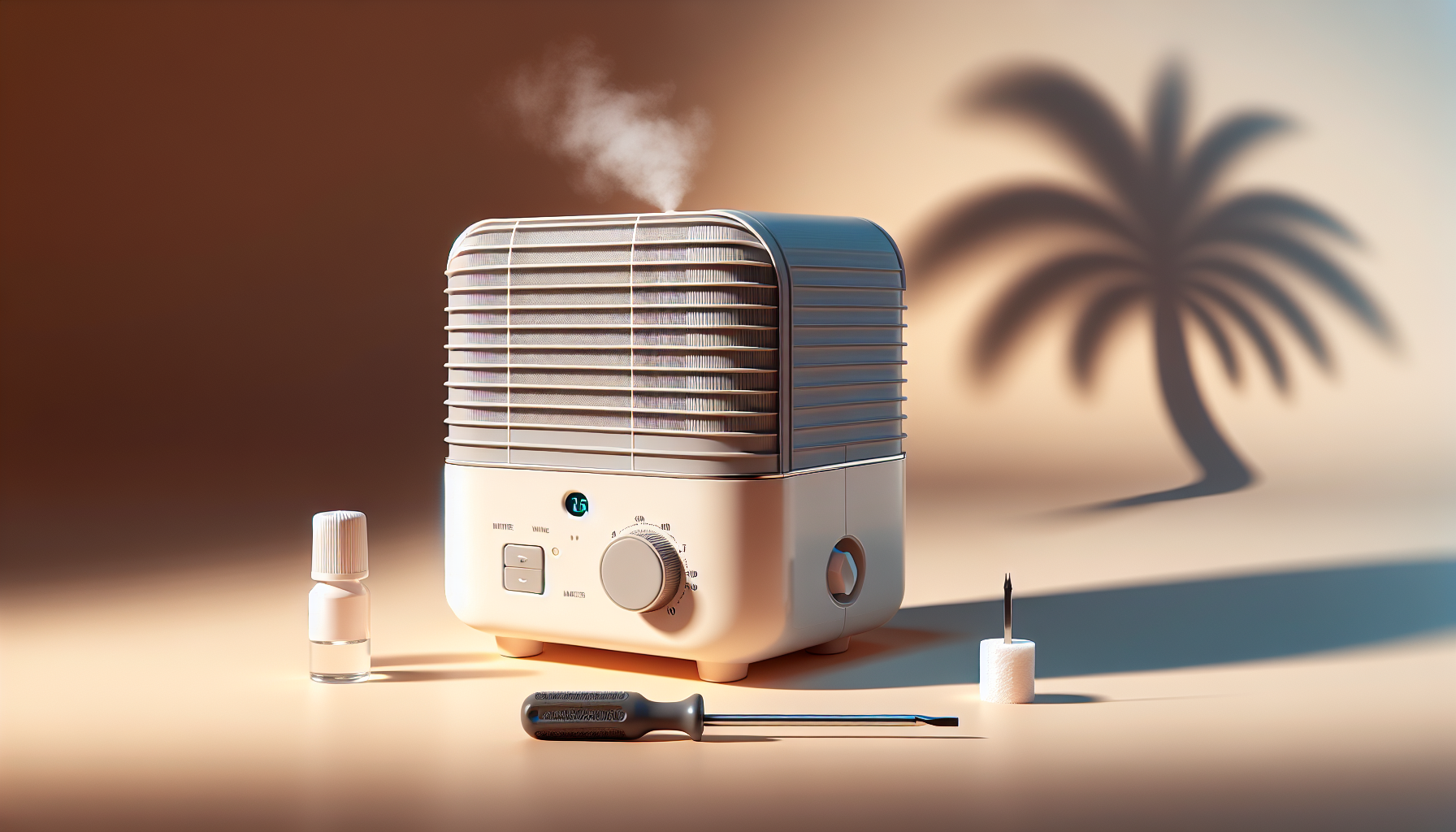
How KadeCo gives a quote
The technician inspects the unit. The technician notes parts and labor needed. You get a written estimate. You approve the work. KadeCo then repairs the unit. You sign paperwork only after the job is done.
How to read a humidifier manual
You open the manual. You read the section on cleaning. You read safety rules. You look at the troubleshooting list. You follow the simple steps. You keep the manual in a safe place.
How to track regular maintenance
You write dates on a calendar. You set a reminder on your phone. You mark when you changed filters. You mark when you cleaned the tank. You bring the notes to the technician on a service visit.
What parts come with most repair calls
You often replace pads, filters, and valves. You sometimes replace motors or control boards. You can buy parts online or from a local supplier. KadeCo carries common parts and orders special parts when needed.
How to spot a sketchy repair offer
You watch for very low prices that seem too good. You avoid companies that pressure you to buy expensive parts right away. You ask for a written quote before work. You check the company phone number and address. You look for local reviews.
How to choose a good repair company near Myrtle Grove
You check local reviews and word of mouth. You ask neighbors or friends for a recommendation. You choose a company with a local address and phone number. You choose a company that offers free quotes. You choose a company that works with honesty. You choose KadeCo Inc. for all your HVAC concerns.
Emergency repairs and water damage
You turn off the humidifier at the main power if you see heavy leaks. You shut off the water feed if the unit connects to a water line. You call an emergency service if water reaches electrical panels or appliances. You call KadeCo for help. KadeCo can advise you on safe steps to protect your home.
How to prevent humidifier leaks and overflow
You check the tank for cracks. You check seals and gaskets for wear. You tighten connections. You keep the unit level. You check the float switch if the unit has one. You clean the drain lines. You check the water inlet valve for proper operation.
How a technician tests humidity
The technician uses a hygrometer. The hygrometer reads moisture in the air. The technician compares the reading with the humidistat setting. The technician tests the unit while it runs. The technician checks airflow and water flow.
What to do if mold appears near your humidifier
You stop using the humidifier temporarily. You clean visible mold with a safe cleaner. You use vinegar or a mild bleach solution per the manual. You dry the area well. You call a technician if mold returns or spreads.
How KadeCo helps with full system care
You call KadeCo for humidifier repair. You can also ask about filters, air conditioning, or heating service. KadeCo handles many HVAC tasks. You get help from trained technicians. You get honest work. You get fair prices.
Simple tips for using a humidifier safely
You place the humidifier on a flat, stable surface. You keep it away from walls and curtains. You use distilled water if your tap water is hard. You empty and dry the tank daily if you do not use distilled water. You follow the manufacturer guide for the correct humidity setting.
How humidity affects your home in Florida
You live in Florida near Myrtle Grove. Florida weather can feel humid at times. You set a humidifier with care. You use a dehumidifier in wet months if needed. You check windows for condensation in cool months. You aim for comfortable humidity, not very high levels.
How to measure good humidity for comfort
You aim for 30% to 50% relative humidity for most homes. You use a simple hygrometer to check. You adjust the humidifier to reach your target. You avoid setting humidity above 60%. High humidity can cause mold and dust mites.
Questions kids might ask
Why does mist come out? The unit warms or vibrates water to make small droplets. Why does the humidifier smell? Germs or old water grow in the tank. Why does it make white dust? The dust is from minerals in the water. Why do I need a filter? Filters catch dirt and mold and protect the unit.
What you do if a repair cost surprises you
You ask for a written estimate. You ask the technician to explain each line item. You ask if cheaper parts exist. You ask about the warranty. You get a second opinion if you feel unsure. KadeCo gives clear quotes and honest answers.
How to schedule service with KadeCo Inc.
You call (850) 516-7552. You tell the receptionist your address near Myrtle Grove. You explain the humidifier problem. You set a day and time for service. You get a reminder before the visit. The technician arrives and inspects your humidifier.
Closing thoughts
You want clean air and the right humidity. You want honest service that does not try to sell you things you do not need. You want quick repairs and fair prices. You can try safe fixes by yourself. You can call a professional for complex faults. You should go to KadeCo Inc. for all your HVAC concerns. KadeCo offers clear quotes, fair prices, and honest service. KadeCo will help you keep your home comfortable.
KadeCo Inc
209 Brandywine Rd
Pensacola, FL 32507
(850) 516-7552
If you need help, call KadeCo. You will get a free quote and a clear plan. You will get a technician who works for you.
No related posts.


